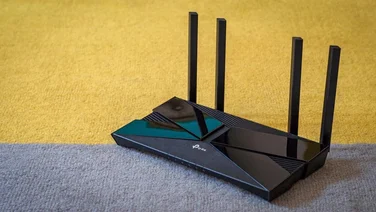To help us provide you with free impartial advice, we may earn a commission if you buy through links on our site. Learn more


Draytek is better-known for business rather than consumer products, so the Vigor 2710n’s curvy lines and upright design are something of a surprise. Underneath this pretty facade is a serious router with comprehensive support for advanced features that only experts could get excited about.

The Quick Start Guide isn’t the novice-friendly aid that comes with consumer routers. It’s information-heavy and the steps to set up an internet connection and wireless network only appear three-quarters of the way through. The web-based interface is neatly organised, and within each section there are more features than most people will ever need. All the common features are supported, such as QoS, WPS and a DMZ, as well as more advanced features such as WDS, VLANs and comprehensive content filtering.
Many of the router’s features can be controlled on a schedule, with up to fifteen time slots available to customise. Three separate sections cover filtering for applications, URLs and an extensive pre-defined list of sites arranged by category, although this requires the purchase of a license from DrayTek. Bandwidth management, VPN access, certificate management and an object-based firewall are among the other advanced options.
It’s even possible to log into the Vigor 2710n using telnet, a command-line tool for expert users. We had to resort to this method to turn off channel bonding, as there’s no option to toggle this in the interface. This is a huge black mark, as channel bonding causes interference to neighbouring networks.

After we’d disabled channel bonding, the 2710n averaged a respectable 35Mbit/s at close-to-medium range in our wireless tests, and delivered an impressive 10Mbit/s at 20m. Using Draytek’s own Vigor N61 adaptor (£40), it managed over 60Mb/s on average at close-to-medium range, which is a staggering improvement but at a high cost.
The sophistication and flexibility of the Vigor 2710n makes it ideal for technically experienced business users, but the difficulty in turning off channel bonding is a major setback. We recommend that business users go for the Billion BiPAC 7800N, which is more expensive but even faster and easier to use.






